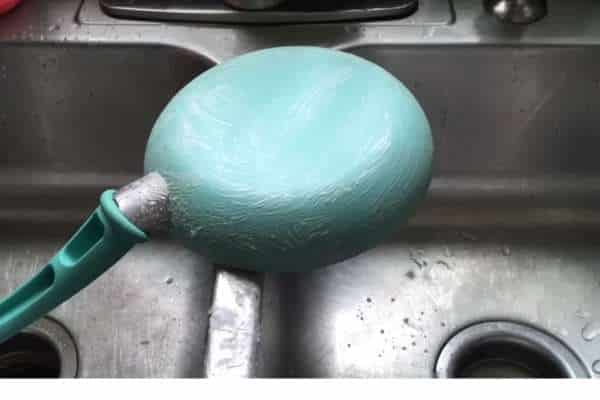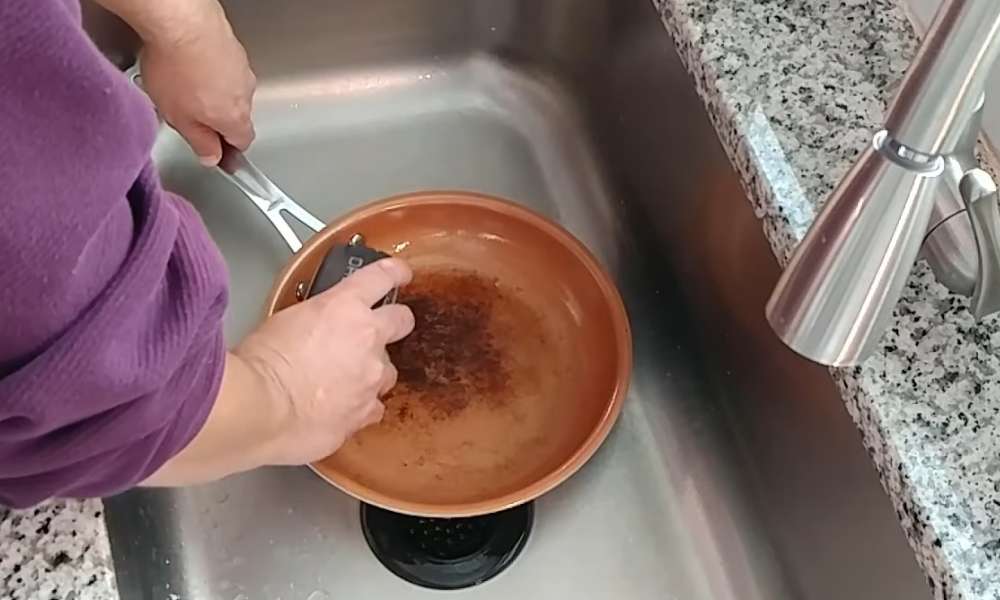Ceramic cookware, with its smooth non-stick surface and excellent heat distribution, has become a staple in kitchens worldwide. However, to keep it performing at its best, knowing how to clean ceramic cookware properly is crucial. This guide will explore the essential steps and materials needed to maintain the beauty and functionality of your ceramic pots and pans, ensuring they remain a reliable part of your cooking arsenal for years to come. From selecting the right cleaning tools to addressing tough stains, we’ll cover everything you need to keep your ceramic cookware looking as good as new.
What you will need:
- Soft Sponge or Cloth
- Baking Soda
- Vinegar
- Mild Dish Soap
- Warm Water
- Soft Dry Towel
- Lemon And Salt
1. Allow The Cooking Pot To Cool Completely
The first and most critical step in cleaning your ceramic cookware is to let it cool down completely after use. Subjecting a hot ceramic pot or pan to cooler temperatures can cause thermal shock, leading to potential cracking or damage to the ceramic coating. Patience is key here; give your cookware ample time to reach room temperature before proceeding with the cleaning process.
2. Soak In Soapy Water And Scrub Gently
Once your ceramic cookware has cooled, fill it with warm soapy water and let it soak for a while. This soaking process helps to loosen any food particles and makes it easier to clean the surface without much effort. Use a soft sponge or a microfiber cloth to scrub the cookware gently. Harsh scrubbing pads or abrasive cleaners can scratch and damage the non-stick surface, so it’s crucial to be gentle during this step. Pay special attention to areas with food build-up, using the soft side of the sponge to gently lift away any debris.
3. Rinse The Cooking Pot With Hot Water
After scrubbing, rinse your ceramic cookware thoroughly with hot water. Hot water is more effective at removing soap residues and any lingering grease, ensuring that your cookware is completely clean and free from any cleaning agent residues. Make sure the water runs clear, indicating that all soap and food particles have been washed away. After rinsing, dry your cookware immediately with a soft towel to prevent water spots and ensure it’s ready for its next use.
4. Ways To Remove Stubborn Stains:
Ceramic cookware stubborn stains and food residues can accumulate over time. Here are some effective ways to tackle those persistent stains, ensuring your ceramic cooking utensil remains spotless and functional.
1. Baking Soda

Baking soda is a gentle yet powerful cleaning agent that can help remove stubborn stains from ceramic cooking utensils. Create a paste by mixing baking soda with a small amount of water, and apply it directly to the stained area. Allow it to sit for a few minutes before gently scrubbing with a soft sponge. The mild abrasive nature of baking soda will help lift the stain without scratching the surface of your cookware.
2. Lemon And Salt
For stains that are still stubborn, lemon and salt can be a powerful combination. Sprinkle salt over the stained area, then cut a lemon in half and use it to scrub the salt into the stain. The acidity of the lemon combined with the abrasiveness of the salt helps to break down and lift stains.
3. Vinegar
White vinegar is another excellent solution for tackling tough stains, especially those caused by hard water or burnt food. Soak a cloth in vinegar and lay it over the stain, letting it sit for a few minutes. Alternatively, for overall cleanliness and shine, you can fill the cookware with a mixture of one part vinegar to three parts water and gently boil for a few minutes. This helps loosen any stuck-on food and removes lingering stains.
4. Rinse Thoroughly And Pat Dry With A Soft Towel
After using any of the above methods, it’s important to rinse your ceramic cookware thoroughly with water to remove any residual cleaning agents. Finally, pat the cooking utensil dry with a soft towel. This not only prevents water spots but also ensures that your cookware is ready for its next use without any leftover residues.
5. Avoid Abrasive Cleaners Or Scrubbers
The non-stick surface of ceramic cooking utensils is its most prized feature, but it can be easily damaged by harsh cleaning methods. To maintain the integrity of this surface, steer clear of abrasive cleaners and scrubbers such as steel wool or harsh chemical cleaners. These can scratch and wear down the non-stick coating, significantly reducing its effectiveness and lifespan.
6. Store Properly; Avoid Stacking Without Protectors
Proper storage is just as crucial as proper cleaning when it comes to ceramic cookware. Incorrect storage can lead to scratches and chips, which not only affect the cookware’s appearance but also its functionality. To avoid such damage, refrain from stacking your ceramic pots and pans directly on top of each other. If space constraints require stacking, place a soft cloth or a pot protector between each piece of cookware. This protective layer acts as a buffer, preventing scratches and preserving the non-stick surface. Additionally, ensure that your cooking utensil is completely dry before storing it to prevent any mold or mildew growth, which can be harmful to both the cookware and your health.
Conclusion
Maintaining the beauty and functionality of your ceramic cookware requires a gentle touch and mindful care. By allowing cookware to cool before cleaning, soaking in soapy water, using natural substances like baking soda, lemon, salt, and vinegar for stubborn stains, and rinsing thoroughly, you can preserve the integrity of the non-stick surface. Equally important is what you avoid—abrasive cleaners and scrubbers can do more harm than good, potentially shortening the lifespan of your cookware. Proper storage is the final piece of the puzzle, ensuring your pots and pans are protected from scratches and damage when not in use. By adhering to these guidelines, your ceramic cooking utensil can continue to provide a safe, non-stick cooking surface that makes meal preparation a joy and cleaning a breeze.

